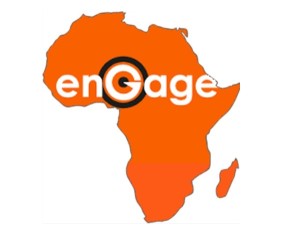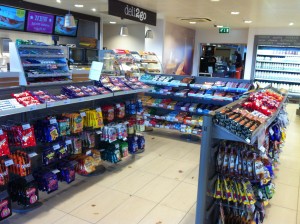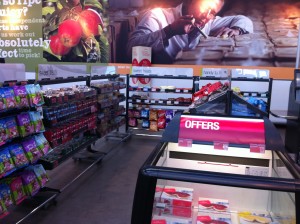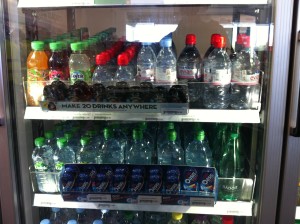I work in an industry that is addicted to promotions. An average consumer goods company will spend 10% of gross sales on promotions. Applied to the world’s 250 leading consumer goods companies this equates to an annual promotions spend of close to US$310 Billion. That’s roughly US$44 spent for every person on the planet and nearly twice as much as is spent on cancer research every year in the EU. And yet research suggests that less than one third of promotions break even (see page 18 of “The Shopper Marketing Revolution“). Promotions have become a habit that many will find difficult to quit, even if ultimately it may kill their business.
How did we get hooked on promotions?
Let’s be honest, promotions were not always a bad idea. Every now and again a great offer enticed new buyers to the brand and get loyalists to stock up or prevent them from trying something else. In those days promotions could be planned well in advance, production could gear up for them and they’d even become an event. Retailers, then, unlike now, were unconsolidated and the extra sales were a welcome bonus from an appreciated supplier.
Then the world of marketing changed, consumers stopped attending to adverts and retail became dominated by massive brands and so promotions became a more important part of the effort to persuade consumers to buy the brand in-store. As retailers grew, promotions then became an essential cornerstone of both their corporate profitability and their brand positioning. When the balance of power shifted towards the retailers, promotions became an essential part of the contracts manufacturers signed to get their goods into stores.
The pernicious promotions addiction
Today promotions are a habit. As shoppers we are used to stores and websites dripping with messages about the latest offers. Manufacturers dedicate not only huge financial resources to promoting but also huge human resources. Over the last couple of weeks, I’ve been working with two very different companies in very diverse markets and yet in both, managers estimate nearly 80% of the time is spent planning, executing and evaluating promotions. Retailers too are preoccupied by promotions; Morrison’s is just the latest UK retailer to announce further price cuts in response to declining sales.
This is a pernicious addiction: some brands claim that 80% of their sales are made on promotion and others report they are on promotion more often than not. Demand for most brands is simply insufficiently elastic to pay for this: Even a reasonably profitable brand (making say 25% EBIT) would have to sell 66% more in order to break-even on a 10% price discount (see page 219 of “The Shopper Marketing Revolution“). According to Deloitte’s, the average composite net margin of a global consumer goods business is 9.6%, so for most securing a break-even is probably economically impossible.
Promotions are a hard habit to quit
So why not just quit? The blunt answer is either fear or ignorance. Fear is a powerful reason for not changing behavior in any context. The risks of stopping promotions are clear: shoppers might go elsewhere; retailers might withhold support, or; competitors might fill the gap. All of these would be reasonable reasons to continue if they were proved true but so often they are not, which leads to the other reason why we continue to promote which is ignorance.
In truth most managers don’t know if shoppers would leave the brand or not, but even if they did, many managers have no idea which shoppers would leave. In most categories the market can be split into deal buyers and loyalists. The consequence of losing deal buyers would certainly be lower volumes but concurrently could also drive better profits. For many, today, it’s tough to access this equation so the risk of quitting remains unquantified.
Likewise discussions with retailers almost always revolve around price and margin despite nearly 30 years of effort to change this. In the absence of tried and tested alternatives, maintaining the status quo is far easier. Lastly, since most manufacturers are unprepared to change, it’s almost impossible to gauge what the competition will do and so the habit persists.
Breaking the promotions habit
Knowledge is the only cure for fear and ignorance. If brands want to learn what will happen if they stop promoting, they could just stop and find out, but that’s fraught with risk. The logical alternative is to test and learn in the same way tech start-ups do: Try a limited, targeted pilot and see what happens, take the learning forward into the next pilot and keep learning until you have so much knowledge about what works and what doesn’t that fear and ignorance become things of the past.
The technology now exists to micro-target shoppers and retail has always been a phenomenal laboratory, so defining a discrete shopper group and a small group of stores makes this sort of testing easier. If the risk is still too great then virtual stores can be a solution. And whilst its potentially costly to conduct research in this field, the payback is enormous – breaking even on every promotion would double the profits of the almost everyone of the top 250 consumer goods firms.
Let us help
We’d be delighted to help you quit your promotions habit, if you’d like to know more about how we can help, contact me.







